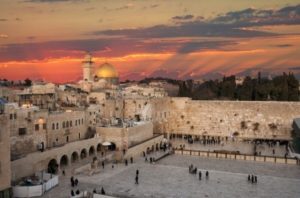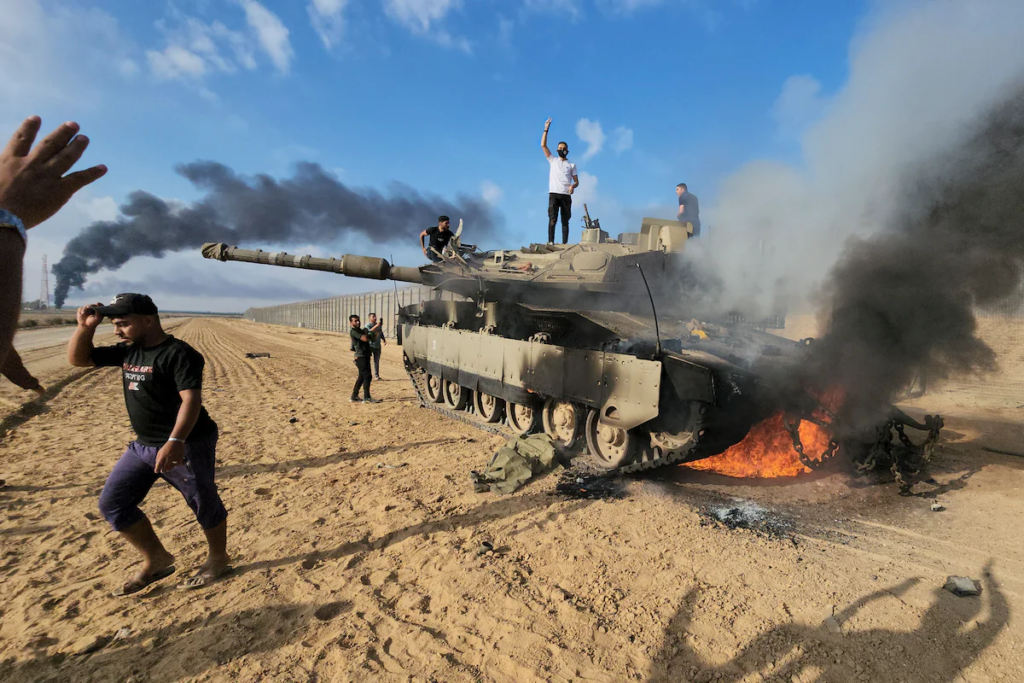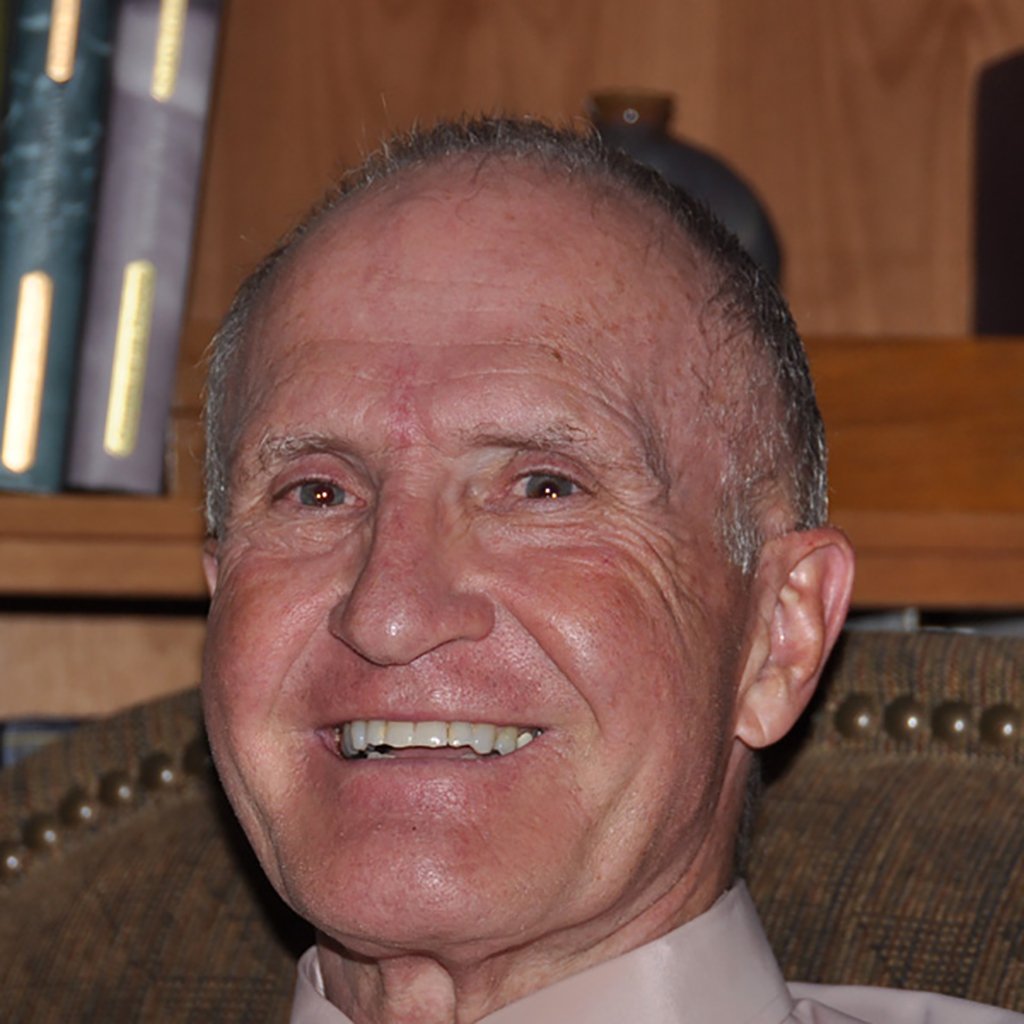PART XVI: Some History of Zion, Jerusalem’s Temple Mount, and Jerusalem’s Church of the Holy Sepulchre
Commentary on events leading up to the present war [which commenced with a surprise attack by Hamas on Thursday, October 7, 2023.
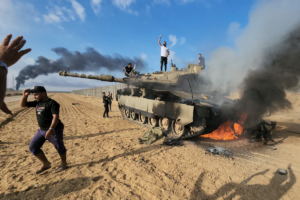
The 2023 Israel–Hamas war is an ongoing conflict at the time of this writing between Israel and Palestinian militant groups led by Hamas. Part of the Gaza–Israel conflict, the war began with a militant invasion of Israel from the Gaza Strip on Thursday October 7, 2023. The Israeli counteroffensive was named Operation Iron Swords.
The following will be a succinct timeline history of the conflictual relationship between Jews and Muslims from ancient times to the advent of modern history. Both Israelis and Palestinians have been struggling for self-determination and sovereignty over the territory, developing respective movements for their causes, and producing seemingly endless enmity and violence. The truth is hard to come by.
•The term “Zion/Tzion/Heb. Sion” was first introduced in the Torah
[2 Samuel 5:7] ~6th century BCE
•Napoleon offered Palestine as a homeland for the Jews. -May 22, 1799
•Rishon Le Zion—a major Zionist settlement—was established in Palestine. -1882
•Theodor Herzel published Der Judenstaat, calling for the creation of a Jewish State- Feb.,1896
•The first Zionist congress was held in Switzerland where the first Zionist organization was founded. -August 29-31, 1897
•Palestinian writer Najib Nassar published Al-Karmel Newspaper, opposing Zionist colonization.
•Britain smashed the 3-year long “Young Turk” Arab revolt. -July 3, 1908
•Sykes-Picot secret agreement signed to divide the middle east between the French
and British. -May 19, 1916
•Zionist British cabinet member Herbert Samuel wrote The Future of Palestine, a secret memora-andom calling on his cabinet colleagues to support Zionist settlement in Palestine. January, 1915
•Balfour Declaration was created wherein Britain promised a “Jewish National Home” on Arab Land. -November 2, 1917
•The League of Nations approved the British Mandate for Palestine and its purpose of helping establish a Jewish homeland. Large-scale Jewish immigration followed in succeeding decades, including during Nazi persecution and the Holocaust. Both sides continued to assert their right to establish a state. -July 24, 1922
•The British Mandate for Palestine, laid the real groundwork for a Jewish State in Palestine to be-
come a reality. -from 1917 to 1948
•Washington D.C.’s King-Crane Commission conducted re: the future of Palestine. -1919
•Al-Buraq uprising—the first mass protests against Jewish immigration to Palestine. -1929
•Izz Ad-Din Al-Qassam, a Palestinian revolutionary leader killed by British forces. -1935
•6 month long general strike took place in Palestine to protest Jewish immigration. -Oct., 1936
•Peel Commission recommended the partition of Palestine and transfer of Palestinians -1937
from land allocated to a Jewish State.
•Jewish Irgun bombed the King David Hotel in Jerusalem, killing 91 people. -July 22, 1946
UN General Assembly passed Resolution 181 urging partition. -1947
•Israel statehood declared; mass protests against Jewish immigration to Palestine; The US and USSR recognized Israel immediately; and the The Arab-Israeli War of 1948 broke out when five Arab nations invaded territory in the former Palestinian mandate. Hostilities commenced immediately. -May, 1948
•Armed Zionist group, the Irgun, launched a series of attacks against Palestinians.
-during the Arab Revolt, 1936-1939 during the Jewish insurgency,1944-1947, and during the Civil War, 1947-1948
•Zionist conference held at the Biltmore Hotel in New York City solidified US-Zionist relations.
-May 9-May 11, 1942
•Over 80 percent of Palestinians in what became Israel were expelled and approximately 80 percent of Palestinian land was seized by Zionists. Israel confiscated thousands of hectares of land from Palestinian citizens. Mass protests were organized in response and were put down by force from Israel. -1948-1966
•UN General Assembly passed Resolution 194, affirming the right of return of Palestinian refugees, and has reaffirmed it every year since. -1949
•UN established UNRWA, an agency for Palestinian refugees. -1949
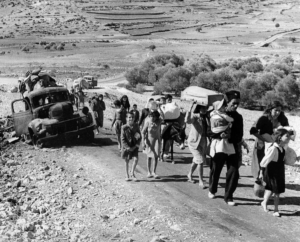
•Armistice agreements signed between Israel and its neighboring Arab countries: Lebanon, Syria, Jordan, and Egypt. -1949
•After the tumultuous events of 1948, 150,000 Palestinians remained in Israel and were eventually granted Israeli citizenship. However, unlike their Jewish fellow citizens, they were subjected to military rule until 1966. After the conquest of the West Bank and Gaza Strip in 1967, Israel began its military control over Palestinians living in the Occupied Palestinian Territory.
•Jordan assumed administrative control of the West Bank. -1950
•Israel massacred Palestinians in the villages of Qalqilya, Kufr Qassem, Khan Younis, and As-samu’. -1956
•PLO formed in Cairo. -1964
•Israel occupied the remainder of historic Palestine—including the Gaza Strip, West Bank, Syrian Golan Heights, and the Egyptian Sinai as a consequence of winning the Six-Day War.
-June 5-10, 1967
•Black September, aka Jordanian Civil War–an armed conflict between Jordan, led by King Hussein, and the PLO [Palestine Liberation Organization], led by chairman Yasser Arafat.
-main fighting took place between September 16-17, 1970
•Massacres of Palestinians after the 1948 war include: Cave of the Patriarchs in Hebron by Israel settler Baruch Goldstein who killed 29 Muslims praying inside the Ibrahimi Mosque and wounded 125. -February 25, 1994
•In the massacre of the Ibrahim al-Magadma Mosque in Beit Lahia, the Israel air force killed 16 Palestine Muslims. -January 3, 2009
•In Itmar, two Palestinians murdered 5 Israelis: Both parents and 3 children of one family were stabbed to death in tie home, and one infant was decapitated. -March 11, 2011
•According to Muslim interpretation, the UN Security Council passed Resolution 242 calling on Israel to withdraw from territories it occupied in 1967. It is more complicated than that. United Nations Security Council Resolution 242 was adopted unanimously by the UN Security Council on November 22, 1967, in the aftermath of the Six-Day War. It was adopted under Chapter VI of the UN Charter. The resolution was sponsored by British ambassador Lord Caradon and was one of five drafts under consideration.
The preamble refers to the “inadmissibility of the acquisition of territory by war and the need to work for a just and lasting peace in the Middle East in which every State in the area can live in security.”
1. Withdrawal of Israeli armed forces from territories occupied in the recent conflict;
2. Termination of all claims or states of belligerency and respect for and acknowledgment of the sovereignty, territorial integrity, and political independence, of every State in the area and their right to live in peace within secure and recognized boundaries free from threats or acts of force.
•Egypt, Jordan, Israel and Lebanon entered into consultations with the UN Special representa-tive over the implementation of 242. After denouncing it in 1967, Syria conditionally accepted the resolution in March 1972. Syria formally accepted UN Security Council Resolution 338, the cease-fire at the end of the Yom Kippur War in 1973, which embraced Resolution 242. Resolution 242 is one of the most widely affirmed resolutions on the Arab–Israeli conflict and formed the basis for later negotiations between the parties. These led to peace treaties between Israel and Egypt [1979] and Jordan [1994]
•Following Israel’s occupation of the rest of historic Palestine, it began building settlements in the West Bank and Gaza Strip. In these colonies, Jewish settlers are allowed to carry weapons under the protection of the Israeli army.
•After 20 years of military occupation, the First Intifada began in the Occupied Palestinian Territory. -1987
•Egypt and Israel sign the Camp David Accords. -September 17, 1978
•Israel invaded Lebanon [one of a series of conflicts through the 1980s beginning with PLO actions] in Lebanon.
• Hezbollah–a Lebanese Shia radical movement sponsored by Iran–called for armed struggle to end the Israeli occupation of Lebanese territory. When the Lebanese civil war ended and other warring factions agreed to disarm, Hezbollah and the SLA refused. Combat with Hezbollah weakened Israeli resolve and led to a collapse of the SLA and an Israeli withdrawal in 2000 to their side of the UN designated border. -1985-2000
•The PLO accepted UN resolutions 242 and 338, recognizing the state of Israel. -1993
•The PLO and Israel signed The Declaration of Principles of Interim Self-Government arrange-ments in Oslo I. -1993
•War between Israel and Hezbollah in Lebanon. -2006
•A group of right-wing Jews [Zionist rabbis] ascended Temple Mount without permission. This elicited widespread criticism from other religious Jews and from secular Israelis, accusing the rabbis of provoking the Arabs. An editorial in the Jewish newspaper Haaretz accused the rabbis of ‘knowingly and irresponsibly bringing a burning torch closer to the most flammable hill in the Middle East,’ and noted that rabbinical consensus in both the Haredi and the Religious Zionist worlds forbids Jews from entering the Temple Mount. The Litvish Haredi newspaper Yated Ne’eman, accused the rabbis of transgressing a decree punishable by “death through the hands of heaven.” –May, 2007
•Israel launched the largest assault on Gaza since 1967–“Operation Protective Edge”–in late summer, after more Hamas rocket attacks on Israeli civilian areas and a Hamas inspired kidnapping/murder of three Israeli boys. -2014
•The PLO and Israel sign an interim agreement granting the Palestinians some autonomy in certain parts of the West Bank and Gaza Strip [Oslo II Accord]. -September 24, 1995
•Israel reoccupied Palestinian cities in the West Bank in the wake of the violent second intifada/Al Aqsa Intifada. -2000-2005
•21 Israeli settlements in the Gaza Strip were unilaterally dismantled and Israeli settlers and army evacuated from inside the Gaza Strip. -2005
• The Muslim religious trust which administers the Temple Mount began digging a 400-metre-long 1,300 foot, 4.9 foot deep trench from the northern side of the Temple Mount compound to the Dome of the Rock in order to replace 40-year-old electric cables in the area. Israeli archaeologists accused the waqf of a deliberate act of cultural vandalism.
-Accusations of vandalism at the site began in 2007 and resurfaced in 2018 and again in 2022
•Israel attacked Gaza in “Operation Pillar of Defense”. Timeline began November 10 when an anti-tank missile struck and IDF jeep near a crossing into Israel, wounding 4 IDF soldiers. Multiple interchanges followed until November 14 when the operation commenced against Hamas targets.
-2012
•Temple Mount shooting: Three men from the Israeli-Arab city of Umm al-Fahm opened fire on two Israeli Druze policemen at the Lions’ Gate. Gun attacks have been unusual at the Temple Mount in recent decades. Following the July 14 attack, the site was shut down, and reopened on July 16 with metal detector-equipped checkpoints, spurring calls for protests by Muslim leaders associated with the site.
